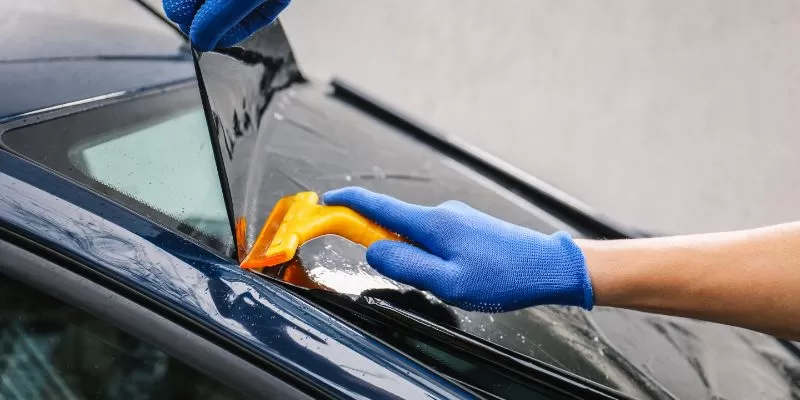Automobile Window Tinting: Boost Convenience and Decrease Glare While Driving
Automobile Window Tinting: Boost Convenience and Decrease Glare While Driving
Blog Article
Window Tinting Rules and Standards: What You Required to Know Prior To Tinting Your Cars And Truck
Prior to proceeding with home window tinting for your vehicle, it is necessary to acquaint on your own with the diverse laws and standards that govern this practice across various states. These policies determine the acceptable degrees of color darkness, usually determined by noticeable light transmission (VLT) portions, and consist of particular specifications for front windshields focused on ensuring road safety. Additionally, certain jurisdictions may supply clinical exceptions for people with certifying problems. Comprehending these intricacies can save you from possible legal implications, however what are the specific policies in your state?
Summary of Home Window Tinting Rules
Window tinting legislations are often based on variant throughout different territories, reflecting local guidelines and safety factors to consider. These legislations determine the acceptable levels of tint darkness and reflectiveness on vehicle windows, making certain that vehicle drivers maintain adequate visibility while likewise securing against unsafe UV rays and heat.
Most regulations classify window tinting based on the Visible Light Transmission (VLT) percentage, which indicates the amount of light that can go through the window. Generally, lower VLT percents indicate darker colors. Legislations usually distinguish in between the front, side, and back windows, with more stringent limitations put on the front windshield to enhance safety for both the motorist and other road individuals.
Compliance with window tinting guidelines is important, as infractions can result in penalties, required elimination of the color, and possible boosts in insurance policy costs. It is essential for vehicle owners to familiarize themselves with regional legislations before continuing with window tinting setups.
State-by-State Color Rules
Comprehending the certain home window tinting policies in each state is important for lorry owners seeking to follow the regulation. Each state in the united state has developed its own collection of rules regulating window tinting, which can vary substantially. These guidelines commonly determine the permitted degrees of color darkness, the types of windows that can be tinted, and any type of medical exceptions that may apply.
As an example, states like The golden state have rigorous limitations on tint darkness for front home windows, while others, such as New Mexico, might permit darker tints. In addition, particular states mandate particular visibility percents for numerous home windows, consisting of the windscreen, front side home windows, and back home windows. It is critical for cars and truck owners to familiarize themselves with their state's regulations to prevent potential fines or fines.
Furthermore, some states might call for an accreditation sticker label to be positioned on tinted windows, indicating conformity with state legislations. Failing to stick to these laws not only risks lawful consequences however can additionally influence safety and exposure while driving. Lorry proprietors must perform thorough research or consult regional authorities to guarantee complete understanding and conformity with state-by-state color regulations.
Allowed Tint Degrees and Types
Numerous lorry owners may be stunned to find out that permitted tint degrees and types differ commonly throughout different states. Each state has actually developed its own guidelines regarding the acceptable darkness and reflectivity of home window tint, frequently measured by Visible Light Transmission (VLT) percentages. VLT refers to the amount of light that can travel through the colored windows; thus, a reduced percentage shows a darker color.

Additionally, the sorts of color products allowed can vary, with some states banning mirror-like or metallic coatings. It is vital for lorry owners to familiarize themselves with their state's particular laws to guarantee conformity. Non-compliance can cause penalties, necessary elimination of the tint, or other legal consequences, making it important to understand these regulations before waging setup.
Medical Exceptions for Tinting
While not all states supply allowances for clinical exceptions regarding window tinting, those that do acknowledge the necessity for particular people to enhance visibility and comfort because of medical conditions. Various clinical problems, such as lupus, skin cancer, and certain eye conditions, can provide individuals especially conscious sunlight. Subsequently, these individuals may call for darker tints to shield themselves from damaging UV rays and glow.

It is essential to note that despite having a clinical exemption, there might still be constraints on the degree of color enabled. Compliance with state legislations guarantees that individuals are both protected and within legal limitations. Those considering medical exceptions need to contact their neighborhood Department of Electric motor Cars or comparable authority to recognize the needs and treatments needed to look for an exemption effectively.
Fines for Non-Compliance
Falling short to comply with home window tinting regulations can result in considerable penalties, which vary by state. Police are empowered to provide citations for lorries that do not abide by the specified tinting laws. These charges generally consist of penalties, which can vary from modest amounts to numerous hundred bucks, relying on the intensity of the offense and the state in inquiry.
In some jurisdictions, duplicated offenses may result in escalating fines or extra penalties, such as required court looks. Non-compliance may demand the elimination of illegal tinting, frequently at the owner's expenditure. In extreme cases, habitual offenders might face suspension of their lorry enrollment up until compliance is achieved.
In addition, insurance coverage ramifications might arise from receiving numerous citations for window tint infractions. Insurance providers might view such offenses as a sign of riskier habits, possibly causing boosted costs or problem in protection.
To prevent these charges, it is vital for vehicle proprietors to acquaint themselves with their regional window tinting laws and make certain that their automobile complies (Window Tinting). This aggressive approach not only stays clear of legal implications but likewise promotes road safety
Final Thought

Most policies identify window tinting based on the Visible Light Transmission (VLT) percentage, which indicates the amount of light that can pass with the window. Compliance with window tinting guidelines is vital, as infractions can result in penalties, obligatory removal of the tint, and potential boosts in insurance coverage costs.Understanding the specific home window tinting guidelines in each state is important for vehicle owners seeking to conform with the regulation. These regulations usually determine the allowed levels of color darkness, the kinds of home windows that can be tinted, and any medical exemptions that may use.
For circumstances, states like The golden state have strict limitations on tint darkness for front windows, while others, such as New Mexico, might permit darker tints.
Report this page